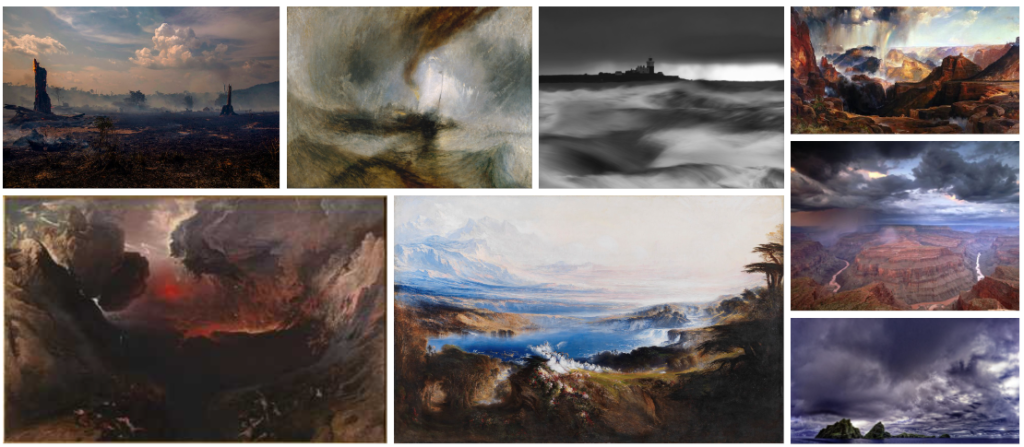
What is Romanticism?
Romanticism was a particular movement or era in art that occurred towards the end of the 18th century during the first half of the 19th century. Romanticism often aimed to put much emphasis on emotion and individualism. The early period of the Romantic era was a time of war, with the French Revolution (1789–1799) followed by the Napoleonic Wars until 1815. There was the fall of the monarchy and a change in society. It was also the time of the industrial revolution where more things were making there way into more factories. enlightenment was another movement known as the age of reason which was a more reasonable and sensible movement in contrast to the movement of Romanticism.
There are many characteristics of Romanticism, painters and photographers took a very large amount of their inspiration from natural aspects of the world and not usually human-made. Many paintings/ photographs have a deepened appreciation of the beauties of nature. Overall, the characteristics include a focus on individualism, an emphasis on nature, emotion over reason, freedom of form, an exploration of the Gothic and unknown, a return to the past, the awe and wonder, the idealization of women, the purity of childhood, and the search for subjective truth.
Many photos focus on tranquillity like a photo of a sunset or calm seas. As well as this, photos that focus on dramatic and dangerous conditions such as a stormy sky or rough seas are also very popular when it comes to romanticism.
What is the sublime?

The sublime can overall be described as a quality of greatness or grandeur that inspires awe and wonder. The sublime is a meeting of the emotional and the natural world. Nowadays, the word is used as an ordinary term like a ‘sublime’ evening but when you focus on the historical facts and meanings, you find a deeper use of the word pointing to the heights of something truly extraordinary. The sublime has been described as many things, but in a sum up of the meanings, people have mostly described it as a judgement, a feeling, a state of mind and a kind of response to art or nature. when the word Sublime is split into two, ‘sub’ is commonly described as below or up to and ‘limen’ meaning limit, boundary or threshold. ‘limen’ can also be seen as another word for the word ‘lintel’ which means he heavy wooden or stone beam that holds the weight of a wall up above a doorway or a window. the impression of pushing upwards against a strong force is an important connotation for the word sublime and commonly used in descriptions in things such as essays.
It was especially important in eighteenth-century Britain, mainly because of the increasing importance of landscape as a subject category for artists. Edmund Burke was not the first to speak of the sublime but he is well known for his descriptions and understanding. he split the idea of the sublime into 7 parts:
Darkness – which constrains the sense of sight (primary among the five senses)
Obscurity – which confuses judgement
Privation (or deprivation) – since pain is more powerful than pleasure
Vastness – which is beyond comprehension
Magnificence – in the face of which we are in awe
Loudness – which overwhelms us
Suddenness – which shocks our sensibilities to the point of disablement
[The sublime, declared Burke, was “the strongest passion,” and he belittled the importance of the beautiful, claiming that it was merely an instance of prettiness.]
